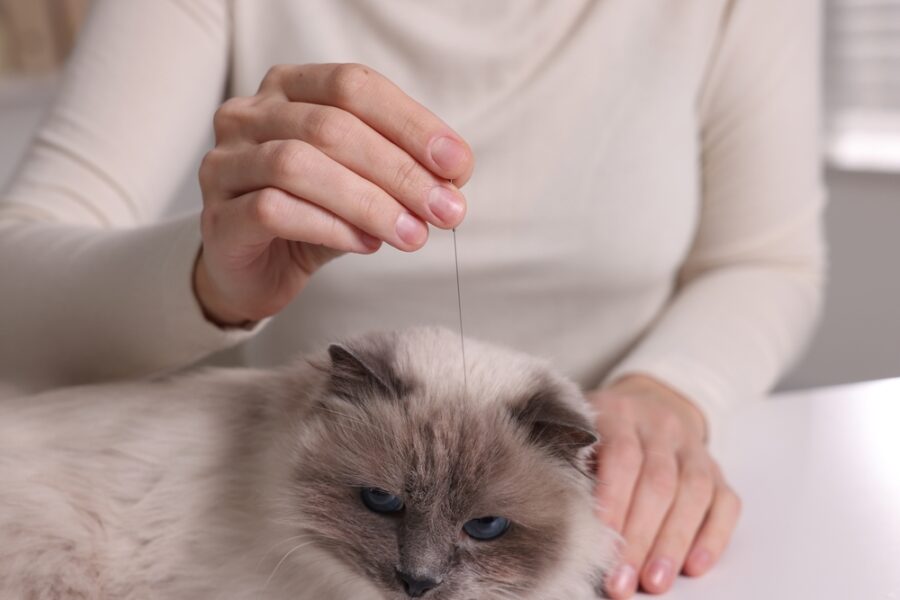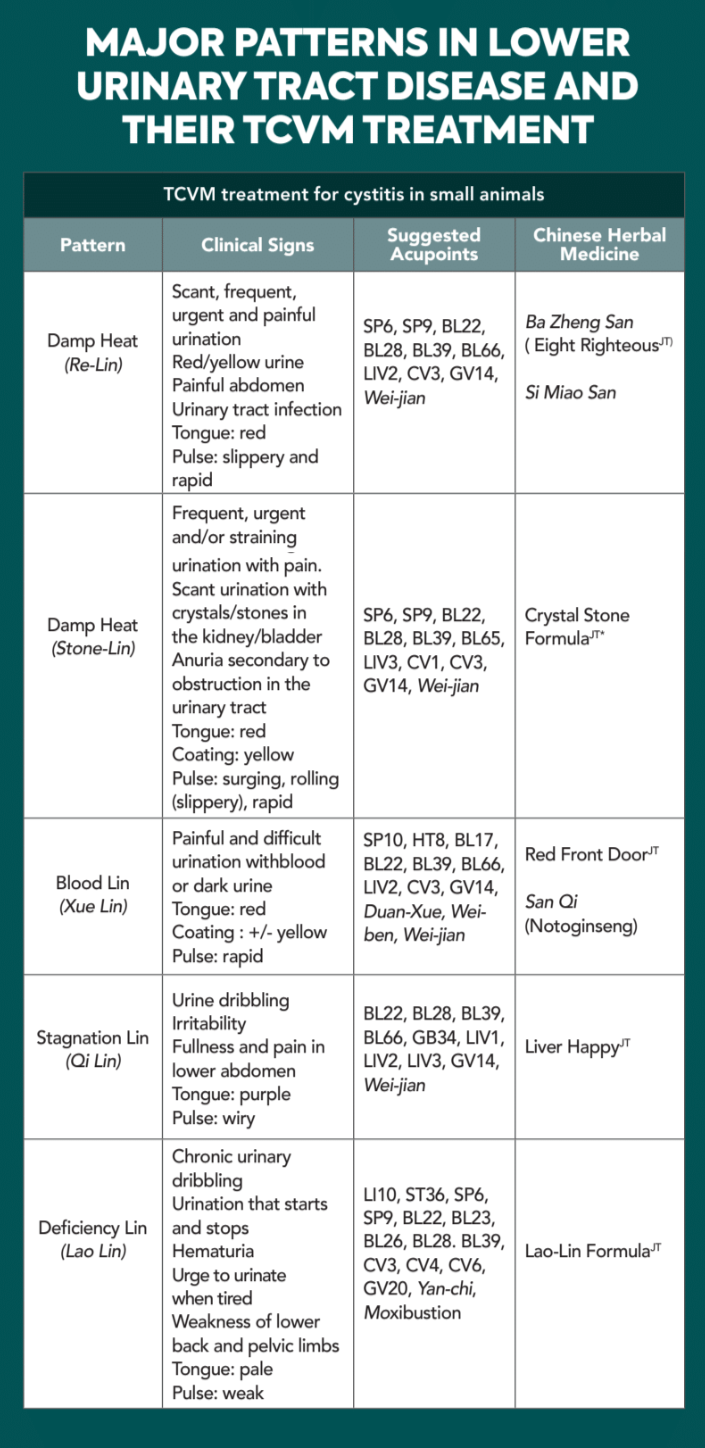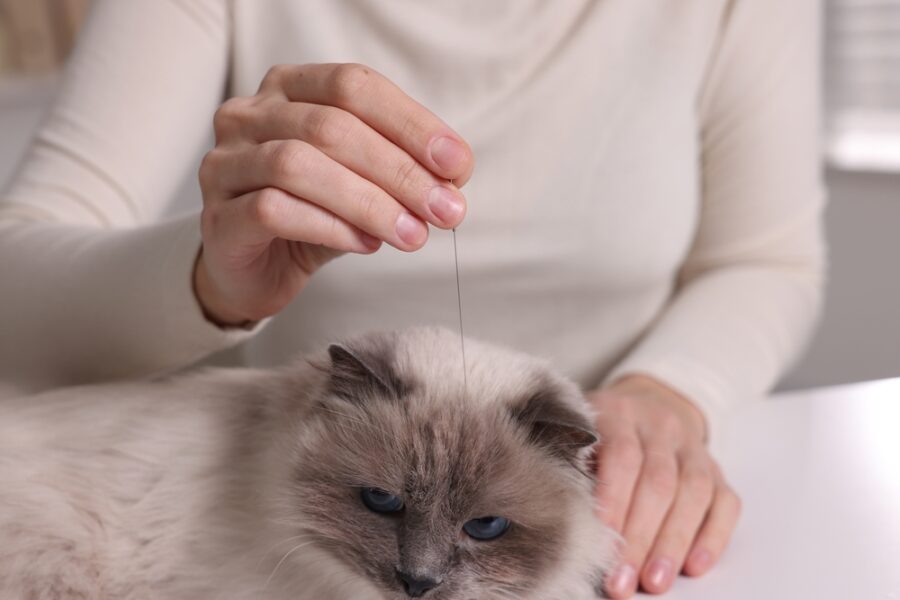
Chronic lower urinary tract inflammation (UTI) is a challenging condition that affects our beloved dogs and cats. Conventional medications may not always provide the desired results. This article explores how Traditional Chinese Veterinary Medicine (TCVM) can offer a more effective approach to treating chronic UTI in our furry friends.
Defining Chronic UTI
Chronic UTI refers to recurrent or persistent bacterial infections of the bladder. It occurs in the absence of neoplasia, stones, concurrent disease, and/or structural and functional abnormalities. Dogs and cats with chronic UTI may exhibit painful urination, frequent and difficult passage of small amounts of urine, blood or crystals in the urine, dribbling, and a foul smell. It’s important to note that “cystitis” describes bladder diseases that result in inflammation.
Chinese Medicine Looks at Patterns in Disease
In Chinese Medicine, diseases are not attributed to a single cause but rather a combination of body signs and symptoms that form a pattern. These patterns are carefully analyzed to determine the appropriate treatment strategy. Unlike Western medicine, where two animals with the same disease would receive the same treatment, Chinese Medicine recognizes the uniqueness of each individual’s signs and symptoms.
Urinary tract infection, known as Lin Zheng in Chinese Medicine, can manifest in various patterns. The most common pattern seen in dogs and cats with longstanding bladder infections is the dual deficiency of the Kidney and Spleen. Chinese Medicine effectively identifies the underlying patterns of disease responsible for the development and recurrence of chronic UTI. Treatment may involve herbal medicine, acupuncture, food therapy, and conventional medications as needed. It’s worth noting that chronic use of antibiotics can have adverse effects on the body, such as injuring the Spleen and causing imbalances in the gastrointestinal and urinary tracts’ normal bacterial flora.
TCVM Approach to Chronic UTI
Conventional Western medicine attributes acute and chronic UTI to bacterial invasion in the bladder. While acute uncomplicated UTI can often be resolved with a single course of antibiotics, conventional treatment fails to recognize other contributing factors that lead to chronic UTI. Low-dose chronic antibiotic therapy is commonly prescribed, but it can increase the risk of antimicrobial resistance and superinfections over time.
In Chinese medicine, chronic UTI is considered multifactorial and develops from external and internal causes. The primary pathophysiology revolves around the presence of Damp Heat. This can result from the invasion of Damp Heat pathogens (bacteria) or internal Zang-Fu organ dysfunction. Damp Heat obstructs the normal functioning of the bladder, leading to pain, difficulty urinating, and other symptoms. If left untreated, Damp Heat can transform into Fire and damage the blood vessels of the bladder, causing blood in the urine. Long-term Damp Heat can even result in the formation of crystals and stones in the bladder.
It’s important to note that a bacterial infection is not always necessary for a diagnosis of Urinary Bladder Damp Heat. Some animals may exhibit classic signs of cystitis without having bacteria in their urine. Chronic UTI typically develops from an underlying dysfunction of the internal organs combined with a bacterial infection, resulting in a mixture of excess and deficiency.
Four TCVM Patterns in UTI
TCVM recognizes four common patterns in lower urinary tract diseases associated with cystitis:
- Damp heat
- Heat
- Liver Qi stagnation
- Kidney deficiency
These patterns are often observed in purebred animals, those with Kidney Jing deficiency, older pets, those with chronic illnesses, pets on inappropriate diets, lack of exercise, prolonged holding of urine, and those kept in stressful conditions. Dampness and Heat are the primary pathogens associated with cystitis, while Liver Qi Stagnation and Kidney Deficiency also play significant roles.
Case Example: A Cat with Recurring Bladder Infections
Let’s consider the case of a five-year-old male spayed domestic shorthair cat who had been experiencing recurring bladder infections and crystalluria (crystals in the urine) for over a year. Despite being on a prescription diet, the crystalluria persisted, and the cat frequently urinated outside the litter box. The cat’s dominant personality traits included aggression and a love for hunting when outside. It also had increased water intake.
Upon TCVM evaluation, the cat exhibited signs of Liver Qi Stagnation with Heat, Heart Heat leading to Shen Disturbance, Bladder Damp Heat, and Spleen Qi Deficiency. The treatment strategy involved moving the Liver Qi Stagnation, calming Shen, draining Damp, clearing Heat in the Lower Burner, and later tonifying Spleen Qi. Dry needle acupuncture was performed at specific acupoints, and the cat was prescribed Liver Happy and Crystal Stone Formula herbal formulas for six months. Dietary recommendations included wet food, increased water intake, and homemade food if available.
Within the first two weeks of treatment, the cat’s behavior improved significantly. It began using the litter box again, exhibited a happier and calmer demeanor, and allowed its family to pet it. After eight weeks of therapy, crystalluria was no longer present, the cat’s coat became shiny and soft, and its energy levels improved. Monthly acupuncture treatments were continued for another six months, and the cat remained free from relapses during the following year.
TCVM together with conventional medicine can effectively resolve chronic and recurrent UTI in dogs and cats. If your pet is prone to chronic or recurring UTI, consulting with a holistic veterinarian who offers TCVM can provide positive and lasting results.

Source: Pet Lovers Diary
Disclaimer: This article is for informational purposes only and is not intended to replace professional veterinary advice. Always consult a qualified veterinarian for proper diagnosis and treatment of your pet’s condition.
